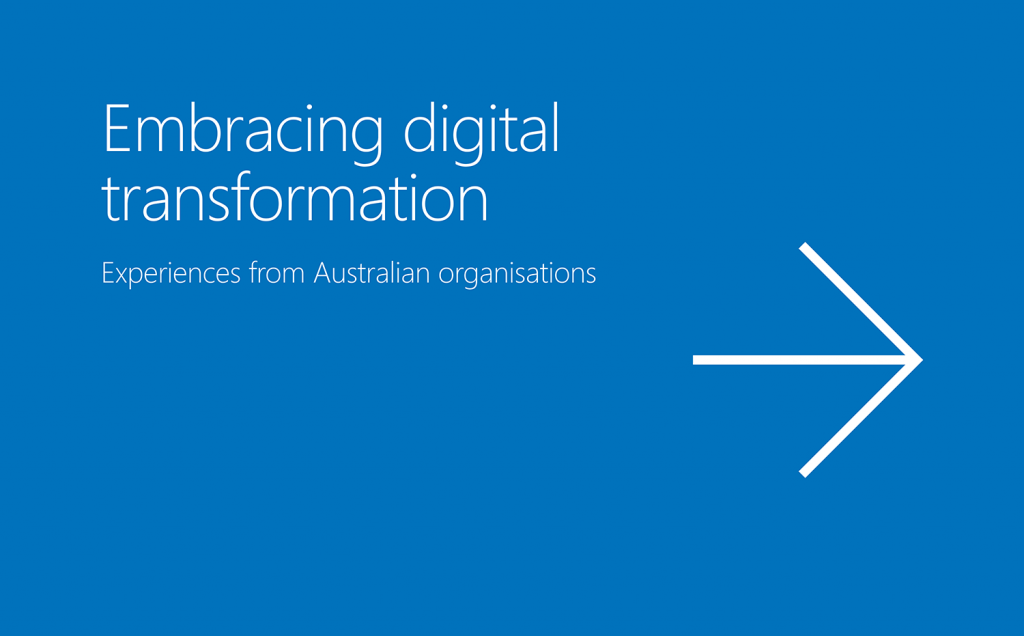
Digital Transformation
The snowball effect of digital transformation
I’m excited to point you to a new research study titled Embracing digital transformation: Experiences from Australian organisations that Microsoft has just released. As the name suggests, the report takes a comprehensive look at how Australian companies, government agencies, associations and specialist firms are approaching digital transformation.
One of the key themes is how digital technologies are changing the human resources (HR) equation for organisations. What I find interesting is the complex interplay between these technologies – such as smartphones, highly portable computing devices, Skype and social media–style communications tools – and current workforce trends.
These new technologies are opening up new ways of working and organising businesses, such as making it easier to allow people to work far more flexibly, both in how they work as well as where they work. In turn, new generations of employees are coming into the workforce seeing this sort of flexibility as the norm. The upshot is that even if organisations don’t consciously want to transform their operations to use the latest digital technologies, they will need to if they want to attract and retain the right talent.
With these trends in mind, our report offers a fascinating insight into how organisations such as Macquarie Group are using digital technologies to enhance communications and create shared experiences for a global workforce. This includes creating ‘virtual corridors’ where increasingly mobile staff can ‘bump’ into each other as they would in a physical office.
Our research also highlights some of the obstacles that arise when organisations seek to roll out new systems to staff – whether these new systems are directly related to internal communications, workforce management or reforming the business as a whole. These include concerns about changes to processes, the fear of being made obsolete by new technology and the challenge of realigning cultural levers, such as performance management systems.
These are all issues we’ve experienced firsthand at Microsoft over the past few years as we’ve transformed the way we work internally. For instance, Microsoft Australia is now fully organised around activity-based working. This means that we changed the office layout and almost everyone works in flexible ways. Even our Managing Director, Pip Marlow, doesn’t have a fixed desk. We have also realigned our performance management framework to complement our more flexible work practices.
Combining our experience with the insights gained from the 30 organisations we spoke to for our research, I would suggest there are a number of key ideas for HR professionals to keep in mind as they approach digital transformation.
One of those ideas is that HR will typically play two roles. The first is to be a direct adopter of digital technologies and use them to transform the HR function, including improving the manager and employee experience. For instance, you might roll out a portal to make it easier for individuals to self-serve and access information relevant to their employment, or for managers to readily access relevant information about their team members. Or you might introduce an online learning platform to make all your training and development assets and programs available in a digital form.
The second role for HR is to partner with business leaders in how they undertake wider digital transformation programs. In our experience, one of the key priorities is ensuring the organisational culture – how the organisation operates and what it values – complements the digital transformation agenda.
With that in mind, imperative to both the cultural and digital transformation is helping team members understand the why of the transformation. Why are these transformation projects being pursued, what are the potential upsides for the organisation and what’s in it for them as individuals? In short, you need a story that draws a compelling line between digital initiatives, the organisation’s vision and purpose, and how that vision translates for individuals.
Again, Microsoft’s own experience has been interesting here. As a leading technology company, we have been a very active adopter of the latest digital capabilities on a global scale. In the HR arena and even more broadly in general management, we are being asked to not only share our learnings on the technology adoption but also how we are leading our internal cultural transformation. As our new report highlights, some of the key ingredients to the successful execution of digital transformation are effective leadership and ensuring that culture and people priorities complement the bigger transformational agenda.
Download the full report: Embracing digital transformation: Experiences from Australian organisations.















